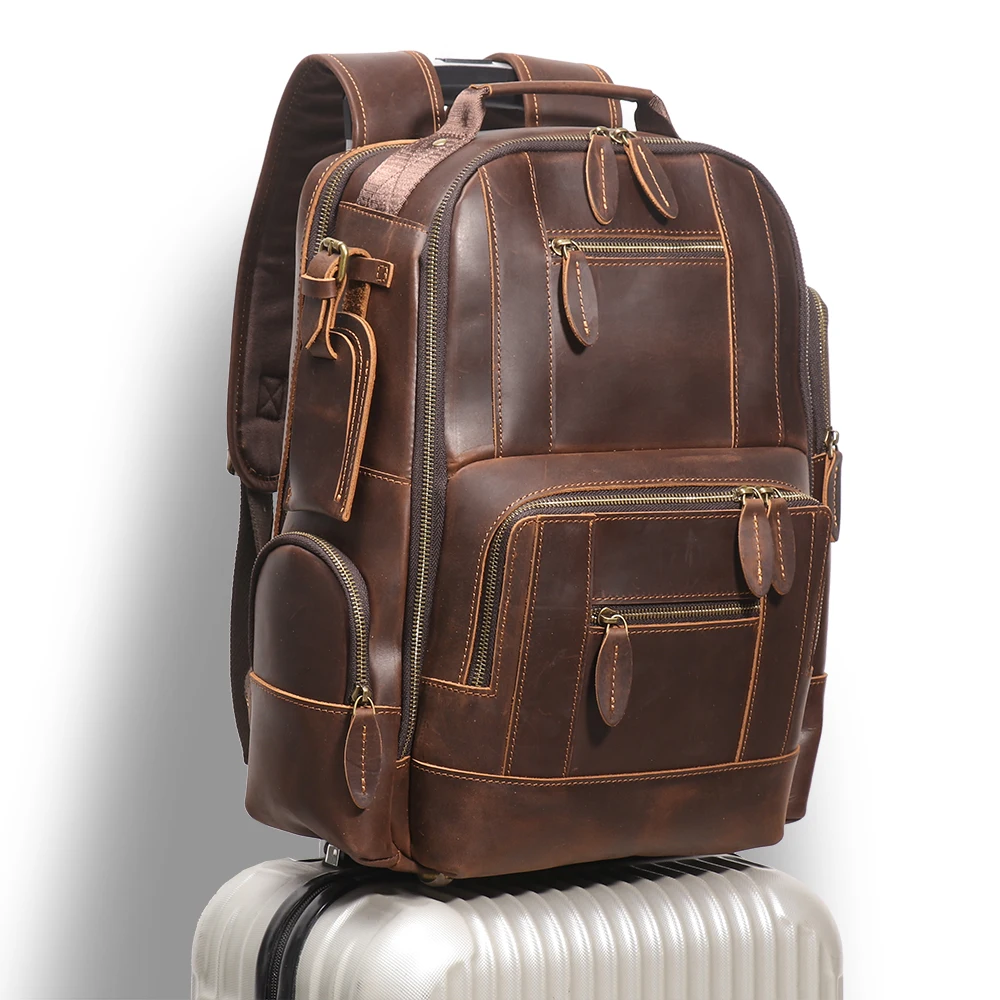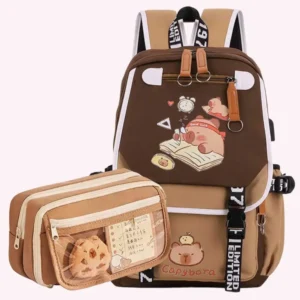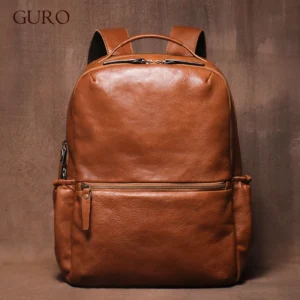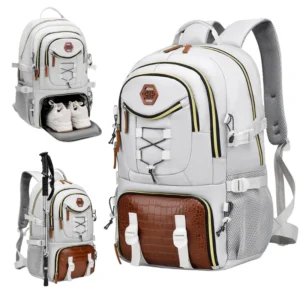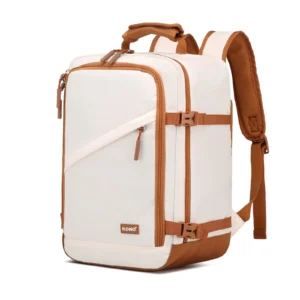Introduction: Why the Right Travel Rucksack Matters
Choosing the perfect travel rucksack isn’t just about finding a bag to hold your belongings—it’s about selecting a trusted companion for your journeys. A travel rucksack differs from regular backpacks in several key ways: it’s specifically designed for travel with features like clamshell openings, enhanced security, and comfortable carrying systems for longer periods.
Unlike hiking backpacks (which prioritize lightweight performance and outdoor features) or suitcases (which offer structure but limited mobility), travel rucksacks strike the perfect balance between portability and organization. The right rucksack transforms your travel experience by distributing weight properly across your body, keeping essentials accessible, and allowing hands-free movement through crowded streets or train stations.
Many travelers learn this lesson the hard way—struggling with aching shoulders from poorly designed straps, fumbling through disorganized compartments for passports, or dragging unwieldy luggage across cobblestone streets. This has fueled the growing “one-bag travel” movement, where savvy travelers pack everything into a single, well-designed rucksack.
Finding your ideal travel companion requires understanding various factors for choosing leather rucksacks and other materials, which we’ll explore in detail throughout this guide.
Understanding Your Travel Needs Before Shopping
Before diving into features and materials, take time to assess how and where you’ll use your rucksack. This preliminary evaluation will save you from purchasing a bag that doesn’t meet your actual needs.
Trip Duration and Capacity Requirements
- Weekend getaways (20-40 liters): Perfect for 1-3 day trips with minimal packing
- Week-long trips (40-60 liters): Accommodates clothing for about 5-7 days plus essentials
- Extended journeys (60-80+ liters): For long-term travelers needing more clothing options and gear
- Day trips & daily use (15-30 liters): Ideal for sightseeing or as a personal item on flights
Travel Style Considerations
Your typical travel style dramatically impacts which features you’ll prioritize:
- Budget backpacking: Durability, security features, and comfort for long carrying periods
- City/urban exploration: Sleek profile, anti-theft features, and professional appearance
- Light outdoor adventures: Water resistance, external attachment points, and ventilation
- Family travel: Multiple compartments, quick-access pockets, and durability
- Minimalist/one-bag travel: Maximized interior space, compression systems, and organization
Airline Carry-On Restrictions
Most travelers prefer avoiding checked luggage fees and potential loss by using carry-on compatible rucksacks. Common restrictions include:
- Dimensional limits: Typically 22 × 14 × 9 inches (56 × 36 × 23 cm), though this varies by airline
- Weight limitations: Usually between 15-22 pounds (7-10 kg)
- Regional differences: European carriers often have stricter size and weight limits than North American ones
Understanding proper leather rucksack sizing and general essential sizing considerations will help you avoid disappointment at the check-in counter and ensure your travel experience starts smoothly.
Essential Features: Capacity and Size Selection
Selecting the right capacity is one of the most crucial decisions when choosing a travel rucksack. While it might be tempting to go large “just in case,” a properly sized bag encourages smarter packing and greater mobility.
Understanding Capacity Ratings
Rucksack volume is typically measured in liters, representing the total space available for your belongings. However, this number alone doesn’t tell the whole story—how those liters are distributed across compartments matters just as much.
Consider these factors when determining your ideal capacity:
* Trip length and frequency of laundry access
* Climate and clothing bulk (winter clothing takes significantly more space)
* Special gear requirements (camera equipment, work materials, etc.)
* Your packing style (minimalist vs. “prepared for anything”)
Size vs. Practical Use
| Capacity | Typical Duration | Best For | Examples of Contents |
|---|---|---|---|
| 15-30L | Day use/overnight | City breaks, minimalists | Change of clothes, toiletries, electronics |
| 30-45L | Weekend to 5 days | Carry-on travelers | Multiple outfits, small gear, laptop |
| 45-65L | 1-2 weeks | Extended travel | Full wardrobe, shoes, larger gear |
| 65L+ | Weeks to months | Long expeditions | Multiple environments, specialized equipment |
Expandability and Compression
Many quality travel rucksacks include expansion zippers that add 5-10 liters when needed, or compression straps that shrink your bag when it’s not full. These features offer versatility across different trip types and help stabilize partially filled bags.
Remember that physical dimensions—not just liter capacity—determine whether a bag works as a carry-on. Some 45L bags with slim profiles can work as carry-ons, while bulkier 35L bags might not. Understanding specific leather rucksack features for different uses helps match your purchase to your travel needs.
The Most Critical Factor: Comfort and Proper Fit
Even the most feature-rich travel rucksack becomes useless if it causes discomfort or pain. Proper fit is non-negotiable, especially for longer journeys where you’ll wear your bag for extended periods.
Understanding Your Torso Measurement
Your torso length—not your height—determines which rucksack size fits you best:
- Find your C7 vertebra (the bony bump at the base of your neck when you tilt your head forward)
- Locate the top of your hip bones (iliac crest)
- Measure the distance between these points along your spine
- Use this measurement to select the correct backpack size (most manufacturers provide size charts)
Key Components of a Good Suspension System
- Shoulder straps: Should be contoured, padded adequately (but not excessively), and wide enough to distribute weight without digging into shoulders
- Hip belt: Transfers 80% of pack weight to your hips—should be substantial, adjustable, and padded properly
- Sternum strap: Stabilizes shoulder straps and prevents them from sliding outward
- Load lifter straps: Connect the top of shoulder straps to the pack, pulling weight closer to your body for better balance
Back Panel Design Options
- Ventilated systems: Use tensioned mesh to create airspace between your back and the pack, reducing sweat buildup
- Contact back systems: Sit directly against your back, providing better stability but less ventilation
- Adjustable harnesses: Allow fine-tuning of torso length for perfect fit
Signs of Good Fit
- Weight primarily felt on hips, not shoulders
- No pressure points or pinching
- Ability to look up without the pack hitting your head
- Shoulder straps that wrap smoothly without gaps or digging
- Ability to take deep breaths when sternum strap is fastened
Many travelers overlook fit in favor of features, but our collection of comfortable leather rucksacks demonstrates that you don’t need to sacrifice comfort for style or function.
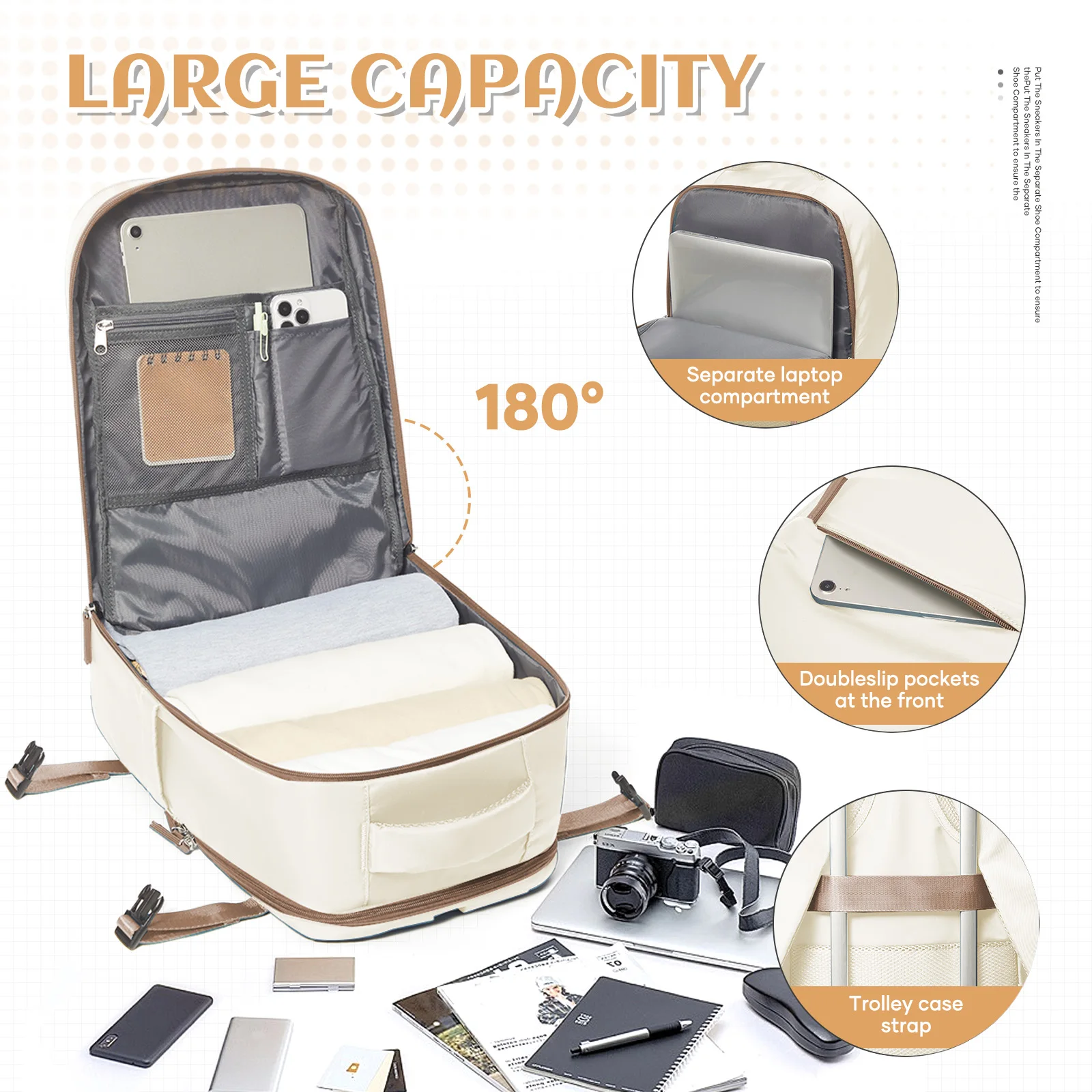
Accessibility: Opening Styles and Entry Points
How you access your belongings can make or break your travel experience, especially when retrieving items in crowded spaces or when time is limited.
Common Opening Styles
Clamshell/Suitcase-Style Opening
* Pros: Unzips fully like a suitcase, providing complete access to contents
* Cons: May require laying the bag flat to access items properly
* Best for: Organized travelers who prefer full visibility of contents
Front-Loading Panel Access
* Pros: Large U-shaped or J-shaped zipper allows access to most of main compartment
* Cons: Items at the bottom may still be hard to reach
* Best for: Balance between accessibility and security
Traditional Top-Loading
* Pros: Simple, durable, often more weather-resistant
* Cons: Difficult to access items packed at bottom
* Best for: Outdoor-focused travel where weather protection is paramount
Side/Bottom Access Points
* Pros: Allow retrieval of specific items without unpacking everything
* Cons: Add complexity and potential weak points
* Best for: Photography gear or items needed frequently
Your travel style should dictate which opening style works best—frequent movers might prioritize quick access, while security-conscious travelers might prefer limited entry points. Understanding the various types of closures in leather backpacks can help you decide which system aligns with your needs.
Organization Systems and Compartmentalization
A well-organized rucksack streamlines your travel experience, minimizing time spent searching for essentials and maximizing available space.
Main Compartment Design
The heart of any travel rucksack typically features one of these organizational approaches:
* Open cavity: Maximizes space flexibility but requires packing cubes or pouches for organization
* Built-in dividers: Creates dedicated zones for different item categories
* Hybrid systems: Combines some fixed organization with open space
External Pocket Types and Their Uses
- Water bottle pockets: Elasticized side pockets for easy hydration access
- Quick-access pockets: Small external compartments for items needed frequently (phone, passport, transit cards)
- Front utility pocket: Medium-sized organization for items like snacks, chargers, or a light jacket
- Document pouch: Flat pockets for papers, tickets, or tablets
Internal Organization Features
- Laptop/tablet sleeves: Padded, suspended compartments that protect electronics and position weight close to your back
- Mesh or zippered dividers: Separate clean from dirty or wet from dry items
- Compression straps: Secure contents and minimize shifting during transit
- Hidden pockets: Store valuables like cash, passports or cards against your back
Well-designed travel rucksacks don’t require additional organizers, though many travelers supplement with packing cubes for clothing compression. Our leather travel backpacks feature thoughtful organization systems that balance flexibility with structure.
Materials, Durability and Weather Resistance
The materials used in your travel rucksack determine its durability, weight, and ability to protect contents from the elements.
Common Fabric Types
- Nylon Variants:
- Cordura: Exceptional abrasion resistance, moderately heavy
- Ripstop: Lightweight with reinforcement threads to prevent tears from spreading
Ballistic: Originally developed for military body armor, extremely durable but heavy
Polyester: Less expensive than nylon, good UV resistance but typically less durable
Canvas and Leather: Classic materials offering distinctive appearance and developing character over time
Understanding Denier Ratings
Denier (D) measures thread thickness—higher numbers indicate thicker, more durable (but heavier) fabric:
* 400-600D: Good balance of weight and durability for general travel
* 800-1000D: Heavy-duty applications where abrasion resistance is paramount
* 1200D+: Extremely rugged bags designed for harsh conditions
Water Resistance Technologies
Few travel rucksacks are fully waterproof, but many incorporate water-resistant features:
* DWR (Durable Water Repellent): Surface treatment causing water to bead and roll off
* PU/TPU Laminates: Interior coatings that prevent water penetration
* Waterproof Zippers: Coated or covered zippers that resist water ingress
* Rain Covers: Removable waterproof shells that cover the entire bag during downpours
Quality Hardware Indicators
- YKK or SBS zippers: Industry standards for reliable, smooth operation
- Duraflex or Woojin buckles: Engineered plastic components that resist breaking
- Bar-tacking: Reinforced stitching at stress points
- Bound seams: Edges covered with binding tape to prevent fraying
For travelers seeking exceptional durability, our full-grain leather backpacks offer unmatched longevity while developing a beautiful patina that tells the story of your journeys.
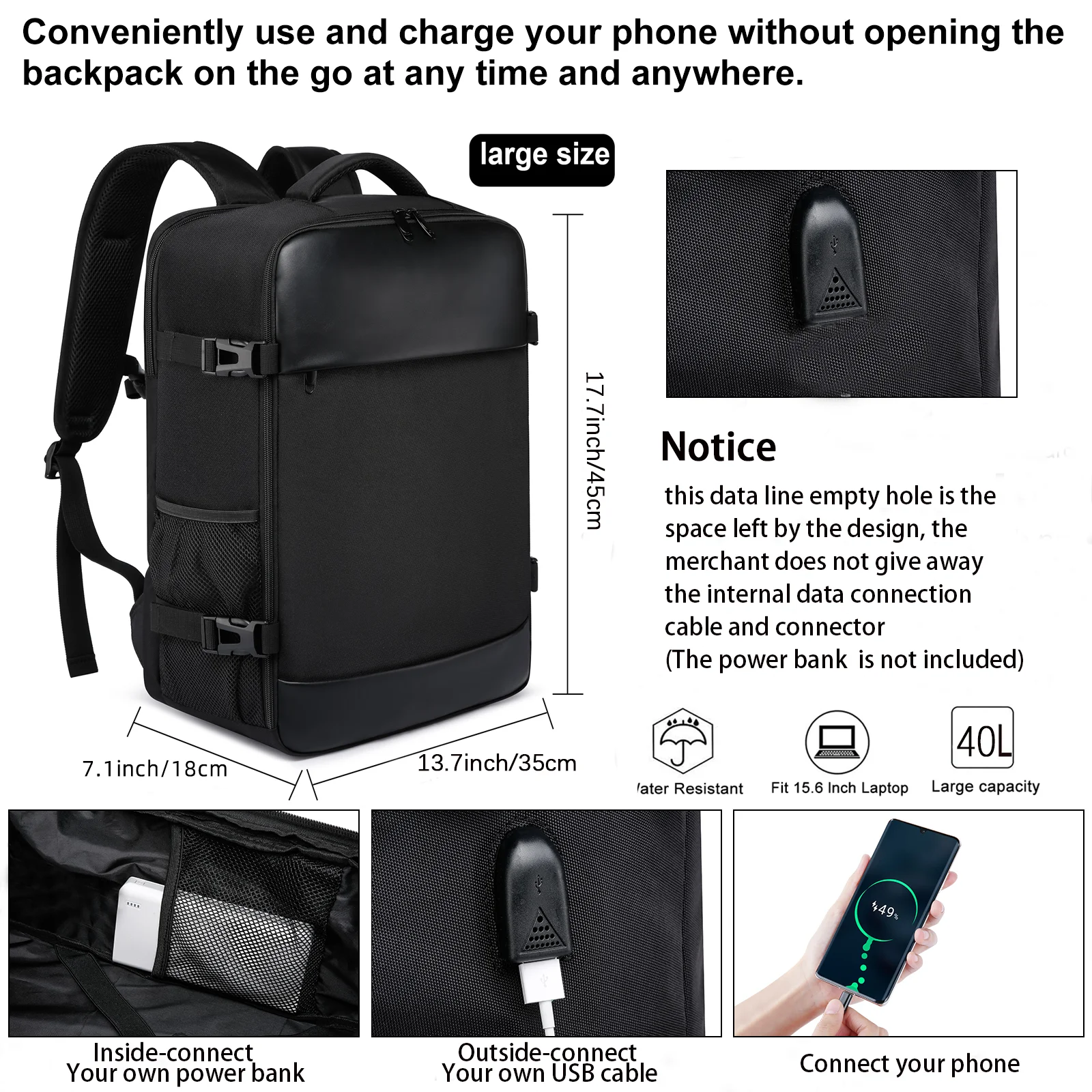
Security Features for Peace of Mind
Travel often takes us to unfamiliar places where security concerns may arise. Modern travel rucksacks incorporate numerous features to protect your belongings.
Anti-theft Design Elements
- Lockable zipper pulls: Allow securing compartments with small padlocks or zip-ties
- Hidden pockets: Concealed compartments positioned against your back for valuables
- Slash-resistant materials: Embedded steel mesh or reinforced fabrics that resist cutting
- Locking cables: Built-in steel cables to secure your bag to fixed objects
Practical Security Strategies
- Layer your valuables: Most important items should be hardest to access
- Distribute emergency cash: Don’t keep all money in one location
- Use inside pockets: Items in the main compartment are generally safer than in external pockets
- Wear your rucksack on your front: In very crowded or high-risk areas
RFID Protection Reality
Many bags advertise RFID-blocking pockets to prevent digital theft of passport or credit card information. While the risk of RFID skimming is relatively low, these protected pockets add peace of mind for sensitive documents.
Remember that no security feature is foolproof—awareness of your surroundings remains your best protection. Our travel-ready leather backpacks combine understated elegance with practical security features that don’t scream “tourist.”
Additional Features Worth Considering
Beyond the core attributes, these supplementary features can significantly enhance your travel experience in specific situations:
External Attachment Systems
- Daisy chains: Rows of loops for attaching carabiners or gear
- Compression straps: Cinch down partially-filled bags for stability
- Gear loops: Reinforced attachment points for larger items
- Trekking pole attachments: Secure hiking poles when not in use
Weather Protection Add-ons
- Integrated rain cover: Stows in a dedicated pocket and deploys quickly during downpours
- Waterproof bottom panel: Extra protection where bags often sit on wet ground
- Sealed or covered zippers: Reduces water ingress through zipper teeth
Convertibility Features
- Stowable straps: Tuck away shoulder straps when checking the bag or reducing profile
- Duffel conversion: Some bags transform from backpack to duffel for different carrying options
- Detachable daypacks: Zip-off smaller bags for day excursions
Travel-Specific Conveniences
- Passport quick-access pocket: Secure yet accessible location for travel documents
- Luggage pass-through: Sleeve that slides over rolling luggage handles
- Flat-lay design: Opens completely for TSA-friendly screening
When evaluating these additional features, consider which truly match your travel patterns rather than being drawn to “nice-to-have” options you’ll rarely use. Understanding what to look for in leather rucksacks helps prioritize features that align with your specific needs.
Practical Selection Tips: Making Your Final Decision
With so many options available, finalizing your travel rucksack choice requires a systematic approach:
Feature Prioritization Framework
- Non-negotiable features: List must-have attributes based on your travel style (e.g., carry-on compatibility, laptop compartment)
- Value-adding features: Identify features that would significantly enhance your experience
- Nice-to-haves: Features you’d appreciate but wouldn’t base your decision on
Research Strategy
- Read recent reviews: Focus on reviews from travelers with similar needs and trip types
- Watch video reviews: See bags packed, worn, and used in realistic scenarios
- Check return policies: Even the most researched purchase may not work in practice
Budget Considerations
While premium rucksacks command higher prices, they typically offer:
* Superior materials and construction
* Better comfort for extended wear
* Thoughtful design features
* Longer usable lifespan
* Better warranty coverage
Most quality travel rucksacks fall into these price tiers:
* Entry-level: $80-150
* Mid-range: $150-250
* Premium: $250-400+
In-Store vs. Online Shopping
If possible, try rucksacks in person with weight inside to assess comfort accurately. Many online retailers now offer generous return policies if you cannot visit a store. Our selection of carry-on leather backpacks combines practicality with premium materials for travelers who value both function and aesthetics.
Breaking In and Care: Getting the Most From Your Rucksack
Even the finest travel rucksack requires proper care to deliver years of service across countless journeys.
Initial Setup and Breaking In
- Adjust all straps to your body before first use
- Practice packing and wearing your loaded bag before traveling
- Expect some softening of materials and strap adjustments during first uses
Basic Maintenance Practices
- Clean according to material guidelines (typically gentle soap and water for most fabrics)
- Allow complete drying before storage to prevent mildew
- Store uncompressed in dry, temperature-controlled environments
- Reapply DWR treatments when water stops beading on fabric
- Lubricate zippers periodically with appropriate products
Common Issues and Solutions
- Sticky zippers: Clean with mild soap, then apply zipper lubricant
- Fraying straps: Carefully melt nylon edges with flame or have professionally repaired
- Loose stitching: Address immediately before the problem spreads
For leather rucksacks specifically, proper DIY leather care for travel backpacks ensures your investment develops beautiful character rather than damage over time.
Carry On Leather Backpack, Roll Top Leather Backpack
Price range: $77.76 through $96.48 Select options This product has multiple variants. The options may be chosen on the product page17 Inch Leather Laptop Backpack, Men's Leather Travel Backpack, Men's Leather Work Backpack
Price range: $106.28 through $143.88 Select options This product has multiple variants. The options may be chosen on the product page- Price range: $80.72 through $108.04 Select options This product has multiple variants. The options may be chosen on the product page
Full Grain Leather Backpack, Men's Leather Laptop Backpack, Men's Leather Work Backpack
$353.46 Select options This product has multiple variants. The options may be chosen on the product page15 Inch Leather Laptop Backpack, Carry On Leather Backpack
Price range: $136.84 through $139.88 Select options This product has multiple variants. The options may be chosen on the product page- $123.08 Select options This product has multiple variants. The options may be chosen on the product page
Frequently Asked Questions About Travel Rucksacks
What is the best liter size for a one-week trip?
For most travelers, 35-45 liters works well for a one-week trip, assuming access to laundry facilities. This size typically fits carry-on restrictions while accommodating necessary clothing and essentials.
Can I use a hiking backpack for travel?
Yes, but with limitations. Hiking backpacks typically have top-loading designs that make frequent access difficult and may have external frames or features that make them cumbersome in transit. They excel in outdoor settings but lack travel-specific organization.
Are travel rucksacks waterproof?
Most travel rucksacks are water-resistant rather than fully waterproof, protecting against light rain but not submersion or prolonged downpours. Many include rain covers for additional protection during inclement weather.
What’s the difference between a rucksack and a backpack?
The terms are largely interchangeable, though “rucksack” traditionally referred to larger, military-style bags with external frames. Today, the distinction is primarily regional—“rucksack” is more common in British English, while “backpack” dominates in American English.
Is it better to roll or fold clothes in a rucksack?
Rolling clothes generally saves space and reduces wrinkles for most fabric types. For structured items like blazers or dress shirts, folding may better preserve their shape. Many travelers use compression packing cubes for maximum efficiency.
Can I bring a full-size rucksack as a carry-on?
It depends on the specific dimensions and airline policies. Most rucksacks marketed as “travel packs” in the 35-45 liter range are designed to comply with international carry-on restrictions, but always check your airline’s specific requirements.
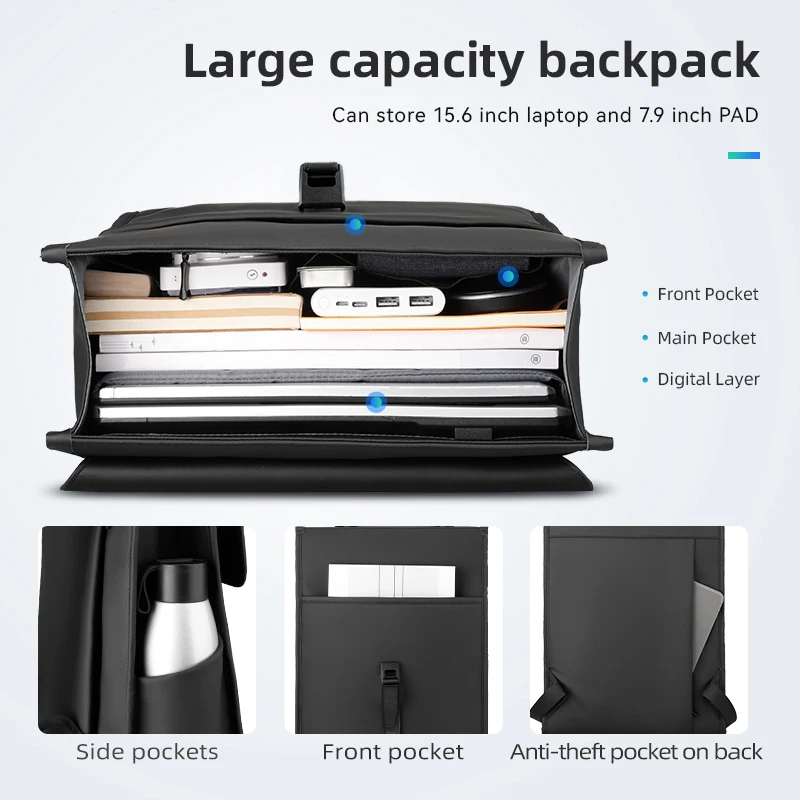
The Summit Carry Approach to Travel Rucksacks
Summit Carry approaches travel rucksack design with a philosophy that balances timeless aesthetics with modern functionality. Unlike mass-produced bags with planned obsolescence, our leather rucksacks are crafted to improve with age and accompany you on countless journeys.
Our design approach emphasizes:
- Premium material selection: Full-grain leather chosen for its durability and ability to develop unique character through natural aging
- Thoughtful organizational systems: Intuitive compartments that accommodate modern travel essentials while maintaining clean aesthetics
- Comfort-focused engineering: Properly padded straps and back panels designed for extended wearing
- Versatile functionality: Designs that transition seamlessly from airport to business meeting to evening exploration
- Subtle security features: Protection without calling attention to valuables
The natural tanning processes we employ create leather that ages beautifully rather than wearing out, developing a rich patina that tells the story of your travels. This approach not only creates more beautiful products but also reduces environmental impact through longevity—a bag that lasts for decades rather than seasons.
Our hardware selection process focuses on components that maintain functionality through thousands of uses while developing character alongside the leather. Understanding different leather backpack styles can help you select the perfect travel companion for your aesthetic preferences and functional needs.
Adapting Your Choice to Special Travel Scenarios
Different travel purposes demand different features from your rucksack. Consider these specialized scenarios when making your selection:
Business Travel Considerations
- Professional aesthetics: Clean lines and sophisticated materials that don’t look out of place in business settings
- Tech protection: Padded laptop compartments and cable organization systems
- Quick-access pockets: Easily retrieve boarding passes, business cards, or phones
- Suit/garment accommodation: Features that minimize clothing wrinkles
Adventure Travel Adaptations
- Increased durability: Reinforced construction for rough handling
- Weather protection: Enhanced water resistance or included rain covers
- Gear attachment options: External loops or straps for specialized equipment
- Security features: Lockable compartments for when bags must be left unattended
Photography Travel Requirements
- Customizable dividers: Protect camera bodies and lenses
- Side-access points: Quickly retrieve equipment without full unpacking
- Weight distribution: Specialized systems for carrying heavy gear comfortably
- Tripod attachment: Secure carrying for essential accessories
Digital Nomad Needs
- Extended comfort: Particularly important when your office is on your back
- Tech organization: Multiple compartments for devices, drives, cables, and adapters
- Security features: Protection for valuable work equipment
- Versatile appearance: Transitions between casual and professional environments
Our collection of men’s leather travel backpacks offers specialized designs that address many of these scenarios while maintaining the timeless appeal and durability that define the Summit Carry brand.
Remember that no single rucksack excels in every situation—understanding your specific travel patterns helps you select the perfect companion for your journeys, whether across town or around the world.

